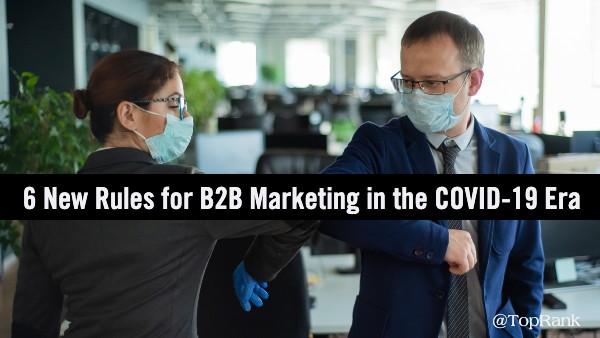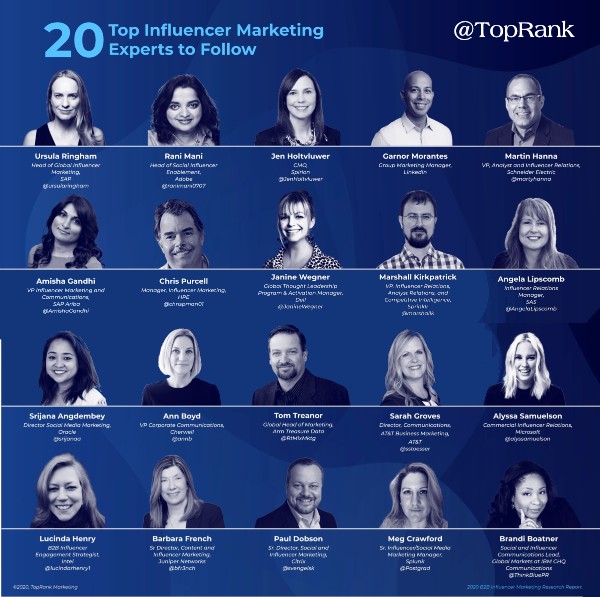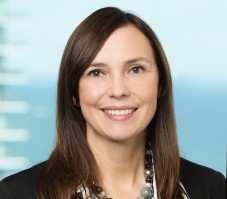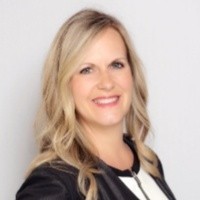Category Archives for "Uncategorized"

Paycheck Protection Program (PPP) loans have aided more than 5 million small business owners, providing a much needed lifeline during the Coronavirus outbreak crisis. The overwhelming majority of business owners are legitimate and will use the money as intended to retain employees and stay operational.
But the PPP program has attracted a few rotten apples. And you won’t believe how rotten they are.
To date, the Justice Department has filed 30 PPP fraud cases. Defendants are charged with bilking taxpayers out of tens of millions of dollars. Luckily, the Feds have recovered a large part of the loan proceeds already.
And what’s been recovered tells a wild tale.
Feds have seized a 2020 Lamborghini Huracan sports car, a Rolex Presidential watch, a 5.73-carat diamond ring, and a diamond bracelet — all purchased with PPP loan money. Other loot includes a Tesla, a 26-foot Pavati Wake Boat, two Rolls-Royces, a Lamborghini Urus, and a Ford F-350 pickup truck.
Authorities also seized cash hoards, froze bank accounts, and recovered other assets.
Some defendants blew taxpayer money on wild spending sprees, including Las Vegas gambling, visits to strip clubs, and day-trading. In one case, a married couple was apprehended at JFK Airport purportedly attempting to flee the country after submitting 18 fraudulent applications.
Every government program attracts a small number of grifters and criminals. And the DOJ has made it a priority to root them out. On March 16, 2020, Attorney General William Barr directed all 94 U.S. Attorneys’ Offices to prioritize investigating and prosecuting PPP loan fraud cases.
On March 27, 2020 Congress passed and President Trump signed into law the Coronavirus Aid, Relief, and Economic Security Act — or CARES Act. It authorized the Paycheck Protection Program. PPP is a low-interest, forgivable loan program designed to help small businesses and self-employed individuals.
In an unusual example of government speed, the Small Business Administration started accepting loan applications just a week later on April 3, 2020. Through July 24, the SBA has approved 5,005,261 loans, constituting $519,505,881,228, demonstrating its success.
The majority of the funds are going to help the nation’s 31 million small businesses, there’s no doubt about it. The number of fraud prosecutions is very small by comparison.
Could these prosecutions involve nothing more than paperwork mistakes? They do not appear to be honest mistakes. All appear to involve egregious circumstances — assuming the government ultimately proves the facts. Some defendants actually were under indictment for other charges at the time of applying for loans. Others hid their criminal past.
Here’s a rundown of the 30 PPP loan fraud cases to date with some of the lurid details alleged:
Two Men, Identity Theft and a Conspiracy (Rhode Island – May 5)
Texas Engineer (Texas – May 13)
Reality TV Personality (Georgia – May 13)
East Texas Man and the Online Name Generator (Texas – May 19)
Manhattan Businessman (New York – May 21)
Hollywood Film Producer (California – May 22)
Lyft Software Engineer (Washington – May 22)
Man on Parole (Virginia – May 29)
Walmart Project Manager (Oklahoma – June 4)
Auto Repair Shop Owner (California – June 5)
IT Company Business Owner (Illinois – June 16)
Austin High Roller (Texas – June 18)
IT Services Company Owner (Massachusetts – June 22)
Wedding Planner (Texas – June 23)
Married Couple Attempting to Flee (Virginia – June 24)
Funeral Director (Texas – June 24)
Owner of Private Investigation Firm (Ohio – June 24)
Ophthalmologist Already Under Indictment (New York – June 24)
Seattle Doctor (Washington – June 30)
Man Under Indictment (Wisconsin – July 8)
Trucking Company Owner (Utah – July 8)
Medical Company Owner (Florida – July 10)
Construction Company Owner (Washington D.C. – July 13)
The Cryptocurrency Investor (Texas – July 14)
The Vegas High Roller (California – July 16)
Handmade Entrepreneur (Arkansas – July 16)
Ex-Microsoft Executive (Washington – July 23)
High-Living Florida Man (Florida – July 27)
Miami Chiropractor (Florida – July 29)
Houston Partier (Texas – August 4)
The DOJ and U.S. Attorneys are using a variety of charges for enforcement, including wire fraud (18 U.S.C. § 1343) and making false statements to the SBA and FDIC-insured banks (18 U.S.C. § 1014). Depending on the charges, penalties could include up to $1 million in fines and up to 30 years in prison, legal experts say.
But of course, the government has to prove the allegations. Justice Department lawyers remind everyone that, “A criminal complaint is merely an allegation and a defendant is presumed innocent until proven guilty beyond a reasonable doubt in a court of law. ”
PPP money is still available and the current deadline for applying is August 8, 2020 (unless extended). A total of roughly $649 billion has been authorized by Congress, leaving $130 billion still available for small businesses as of July 24th.
Have we seen the last of PPP fraud prosecutions? No. New ones are being announced weekly. But it’s important to remember that 30 frauds out of 5 million loans is a minuscule number. The overwhelming majority of loans have no allegations of fraud surrounding them.
Still, a June report by the Government Accountability Office found, “there is a significant risk that some fraudulent or inflated applications were approved.” Treasury Secretary Steven Mnuchin announced that the Treasury Department would review every PPP loan over $2 million. However, the GAO recommended oversight of the more than 4 million smaller loans, also.
The government watchdog also pressed for safeguards and oversight plans to avoid double dipping. There’s a recommendation to audit COVID-19 unemployment benefits paid to workers rehired by employers using PPP loan funds.
Another wrinkle is the loan forgiveness process. Millions of small businesses eventually will apply for forgiveness. That’s bound to trigger another round of scrutiny.
In order to get Paycheck Protection loans forgiven and not have to repay the money, small business owners have to show proof that at least 60% of the money was used for payroll and the rest for other permitted expenses. A requirement of forgiveness is that borrowers must rehire or retain workers — and maintain salary levels.
The DOJ has signaled it may also pursue civil penalties not just criminal prosecutions, particularly around loan forgiveness. Principal Deputy Assistant Attorney General Ethan P. Davis noted in a June 26th speech: “When the borrower is ready to seek forgiveness of the loan, it has to certify that the funds were in fact used to pay costs that are eligible for forgiveness. If an applicant knowingly answers any of these questions falsely, it may face False Claims Act liability.”
This means you have to be just as scrupulous when applying for forgiveness as when you applied for the money initially. The False Claims Act can impose steep financial penalties, including treble damages.
If the PPP debt is not forgiven, the interest rate is very low — 1%. Businesses that have to repay the money get 2 years to repay if funding was issued before June 5. If you got funding after June 5, you have five years to repay. The PPP promissory note you signed will have the terms applicable to you. See the SBA website for updated forgiveness information.
It’s a scary thing for legitimate business owners to sign borrower certifications under potential penalties of fines and prison time. The SBA programs have complex rules. It could be easy to trip up innocently.
This has caused some entrepreneurs and business owners to think twice about applying. No one under pressure of this pandemic wants to fumble on a technicality while legitimately trying to pay employees and keep their life’s work afloat. One local businesswoman told me she prayed for two weeks before applying because of her fears over confusing requirements.
Representatives of the Department of Justice say honest owners acting in good faith shouldn’t worry. Stephen J. Cox, the U.S. Attorney for the Eastern District of Texas, wrote in an op-ed in Texas Lawyer:
“Rest assured that we will be careful not to discourage legitimate businesses from accessing the important financial resources that Congress made available through the CARES Act. We will not punish companies that accessed stimulus funds in good faith compliance with the rules. Nor, will we seek out applicants who made technical mistakes in processing paperwork or honestly misunderstood regulatory or certification requirements. Our focus is on fraud.”
Let’s hope the entire government is on the same page as Mr. Cox.
This article is not intended as legal advice. It’s intended to offer news and peer perspective on an important issue that affects us as business owners. Stay informed and check with your attorney and/or accountant with questions.
Case data source and image source: Justice.gov
This article, “30 PPP Fraud Prosecutions So Far, and Counting” was first published on Small Business Trends


I was supposed to go to an Alanis Morissette concert this July. When the pandemic hit hard in March, I wasn’t ready to cancel my ticket yet. Surely, surely we would have it sorted in time for an outdoor concert four months from now. I held out hope. Then, in June, she rescheduled for July, 2021. And now I’m wondering if that will be enough time.
Isn’t it ironic?
Don’t you think?
All of which to say: This pandemic has been around for longer than we thought it would, and is looking to linger far longer than we would like. What seemed like a brief, surreal interlude to be gotten through has now become a reality to live with, at least for the time being.
As B2B marketers, we need to reassess how we are adapting our marketing to our buyers’ current situation. We’re no longer scrambling to cobble together short-term fixes — we need to be out of reaction mode and into strategic planning mode.
Our marketing agency has been helping clients revise their marketing plans for months now, from messaging and audience to tactics and measurement. Here are a few rules we’ve picked up that other marketers should follow:
Okay, this is less a NEW rule than a timely reminder. I’m sure most marketers who read our blog (as smart, skilled and beautiful as you are) don’t need to hear it. But just in case: You should never come to an audience without something of value.
Corollary: “Something of value” can not equal “Knowledge of how our product/solution can improve your life.”
People are distracted and stressed. They’re dealing with a new crisis every day. They’re spending way more time with their children than is psychologically healthy. And they have more content than ever before to occupy their free time. If you’re asking for their attention, you must reward it. Be entertaining, be useful, be both if you can. [bctt tweet=”‘Be entertaining, be useful, be both if you can’ in your #B2B content marketing, says @nitewrites.” username=”toprank”]
After you deliver, then you can ask for a next step. But make sure your content is intrinsically valuable.
The pandemic lifestyle is, to put it lightly, isolating. Who would have thought you could miss hearing co-workers rock in their chairs, play music a little too loud, or bump into you in the hallway? Most of us are craving social interaction.
If you’re used to broadcasting with your content, it’s time to consider how you can start conversations. How can you interact with your audience on a human level? How can you encourage them to interact with each other, too? Think how much your audience would value a lively, thought-provoking conversation with their colleagues and peers.
You can encourage interaction with content in a few easy ways:
In general, look for ways you can call out a subset of your audience and get them talking, both to each other and to your brand representatives. We can all use a little more social interaction right now.
I don’t know about you, but I cringe every time I see an ad about something “going viral.” We are 6 months into a viral pandemic and marketers are still running ads about going viral! How can this be?
This is just one example of how completely innocuous messaging pre-COVID can seem tone-deaf now. Does your content have an anecdote about a dinner party with 15 people? Does your header image feature a crowd of people? Are you talking about “going into the office” or “thinking about this on your commute?” If so, you’re alienating your audience.
Not every piece of content has to be about the pandemic, or being nostalgic for the world that once was. But there needs to be a baseline of empathy: Working from home, social distancing, and mask-wearing are all facts of everyday life.
In the time before the pandemic, we all spent hours looking at screens every day. It’s just there were different screens, in different environments. It was easier to differentiate between the office and home, work and play. Now, our surroundings are homogenous throughout the day — and the content we consume feels same-y, too.
Think about content fatigue as you plan your calendar. Is your audience looking for another wall of text? Do they want to look at another grid of talking heads?
Our agency is finding more success right now with multimedia, interactive content. Our B2B Influencer Marketing report is an example. The content includes case studies, influencer participation, and original research, presented in an animated, dynamic way.
Essentially, keep in mind that idea of efficiently delivering value. Can your blog post be a quick video or audio interview instead? And can that video be five minutes long instead of 10? [bctt tweet=”Can your blog post be a quick video or audio interview instead? And can that video be five minutes long instead of 10? says @nitewrites.” username=”toprank”]
For me, one of the stranger elements of pandemic life is learning how similar I am to everyone else. I had an urge to do puzzles in March — all the stores were sold out. I wanted to make bread in April — the stores ran out of flour. In May, everyone bought bikes.
Right now, every B2B business is missing their trade shows and in-person demos. So most of them are doubling down on content. The best way to differentiate your content is to bring your audience voices they can’t hear anywhere else.
Co-create content with influencers. Feature subject matter experts in your organization. Tap your current and prospective customers to get their take. The more voices you can bring to your content, the more it will stand out to your audience.
Per rule #1, people are less interested in promotional content right now. Businesses may have put their purchasing plans on hold, or at least tightened budgets. Marketing’s chief goal right now is likely to be establishing brand credibility, creating thought leadership content, and building relationships for the future.
As your goals change, your measurement must change as well. You can’t measure an awareness campaign in SQLs, or relationship-building in number of demo requests received. That doesn’t mean giving up on measurement or accountability — it just means making the metrics match your goals. For example, you could measure:
So here’s the $100,000 (adjusted for inflation) question: At what point should you stop producing relevant, interactive, empathetic, dynamic and collaborative content? When can you heave a sigh of relief, stop listening to your audience, and start broadcasting promotional messages?
When you put it that way, it’s obvious: These rules are best practices for content no matter what’s going on in the world. The pandemic didn’t create the need for these rules; it just amplified how crucial they are. Back in January, we might have had the luxury of ignoring one or more of them. Now we have the joyous necessity of being forced to do better.
And that’s the good news: Making your marketing better for the pandemic will make you a better marketer now and for whatever comes next.
Need help creating content? We’re here for you.
The post 6 New Rules for B2B Marketing in the COVID-19 Era appeared first on Online Marketing Blog – TopRank®.

As the landscape in which small retail businesses operate in continues to change, they must adapt. The new digital tools from Lightspeed look to help retailers improve their digital transformation and address the changes taking place.
The company is introducing in-store POS, eCommerce, Digital Wallet, and Analytics Core solutions. It will also include Mobile Tap, which will support contactless payment and curbside pick-up. Lightspeed says this will support small businesses as they adjust to new consumer behavior. And if businesses don’t overhaul their digital capability, they will not attract customers that are adopting these new behaviors.
The Founder and CEO of Lightspeed, Dax Dasilva, explains the priority is to look to the future of retail. Adding he wants businesses to adapt rapidly to the quick and dramatic consumer behavior changes of the past few months.
In the release, Dasilva goes on to say, “The SMBs that Lightspeed powers are innovating quickly because they are equipped with tools that help them remain agile, stay connected with their customers, and future-proof their businesses.”
For retailers, it means improving the omnichannel shopping experience so customers can seamlessly go in and out of a brick and mortar and digital stores. According to Lightspeed, the goal is to enable greater multi-location efficiencies and provide opportunities for improved productivity for its retailers.
One of the new behaviors consumers are having to adopt is avoiding or greatly limiting contact with people. But by their very nature retail businesses require some contact; at least that was the case in the past.
With Mobile Tap, retailers can deploy contactless payment and provide curbside pick-up for their customers. This will dramatically reduce the points of contact between employees and customers.
Lightspeed says merchants in the U.S. using its payment system can process transactions with just a tap. This includes anywhere in the store as well as curbside so they can follow social distancing protocols.
The Mobile Tap hardware connects through Bluetooth thus turning an iPad into a contactless mobile payment terminal. The end-to-end encryption technology then processes the payment securely.
One of the biggest challenges for eCommerce retailers is abandoned carts. According to Lightspeed 21% of U.S. eCommerce shoppers abandon their cart at checkout. This the company says is because of lengthy or complicated checkout processes.
The Lightspeed Digital Wallet will expedite the process with a secure and seamless experience. Digital wallets are fast and efficient in the real world often taking seconds to pay for items. The one-click eCommerce checkout will make customers happy and improve the conversion rate by lowering abandoned carts.
Another essential tool part of a company’s digital transformation is analytics. Because more businesses now also have a digital presence, Analytics Core looks to empower owners so they can make data-driven decisions.
With Analytics Core businesses can get access to different dashboards and get insights on sales, inventory, and employee performance.
The way people consume is going to be different for the foreseeable future. Whether it is one, two or more quarters businesses must adapt in this new economic landscape. And this will change businesses after the pandemic is under control.
For those who manage to survive, it is because of their ability to adapt to the new consumer behaviors with technology. And the great thing about this is, the technology will continue to deliver long after the pandemic is over.
The key is to explore all possible opportunities digital technology offers to your industry and business. While not everything will deliver positive results, having a strong presence in a digital ecosystem will pay dividends.
Image: Lightspeed
This article, “New Lightspeed Tools Helping Small Retail Businesses” was first published on Small Business Trends


I was supposed to go to an Alanis Morissette concert this July. When the pandemic hit hard in March, I wasn’t ready to cancel my ticket yet. Surely, surely we would have it sorted in time for an outdoor concert four months from now. I held out hope. Then, in June, she rescheduled for July, 2021. And now I’m wondering if that will be enough time.
Isn’t it ironic?
Don’t you think?
All of which to say: This pandemic has been around for longer than we thought it would, and is looking to linger far longer than we would like. What seemed like a brief, surreal interlude to be gotten through has now become a reality to live with, at least for the time being.
As B2B marketers, we need to reassess how we are adapting our marketing to our buyers’ current situation. We’re no longer scrambling to cobble together short-term fixes — we need to be out of reaction mode and into strategic planning mode.
Our marketing agency has been helping clients revise their marketing plans for months now, from messaging and audience to tactics and measurement. Here are a few rules we’ve picked up that other marketers should follow:
Okay, this is less a NEW rule than a timely reminder. I’m sure most marketers who read our blog (as smart, skilled and beautiful as you are) don’t need to hear it. But just in case: You should never come to an audience without something of value.
Corollary: “Something of value” can not equal “Knowledge of how our product/solution can improve your life.”
People are distracted and stressed. They’re dealing with a new crisis every day. They’re spending way more time with their children than is psychologically healthy. And they have more content than ever before to occupy their free time. If you’re asking for their attention, you must reward it. Be entertaining, be useful, be both if you can. [bctt tweet=”‘Be entertaining, be useful, be both if you can’ in your #B2B content marketing, says @nitewrites.” username=”toprank”]
After you deliver, then you can ask for a next step. But make sure your content is intrinsically valuable.
The pandemic lifestyle is, to put it lightly, isolating. Who would have thought you could miss hearing co-workers rock in their chairs, play music a little too loud, or bump into you in the hallway? Most of us are craving social interaction.
If you’re used to broadcasting with your content, it’s time to consider how you can start conversations. How can you interact with your audience on a human level? How can you encourage them to interact with each other, too? Think how much your audience would value a lively, thought-provoking conversation with their colleagues and peers.
You can encourage interaction with content in a few easy ways:
In general, look for ways you can call out a subset of your audience and get them talking, both to each other and to your brand representatives. We can all use a little more social interaction right now.
I don’t know about you, but I cringe every time I see an ad about something “going viral.” We are 6 months into a viral pandemic and marketers are still running ads about going viral! How can this be?
This is just one example of how completely innocuous messaging pre-COVID can seem tone-deaf now. Does your content have an anecdote about a dinner party with 15 people? Does your header image feature a crowd of people? Are you talking about “going into the office” or “thinking about this on your commute?” If so, you’re alienating your audience.
Not every piece of content has to be about the pandemic, or being nostalgic for the world that once was. But there needs to be a baseline of empathy: Working from home, social distancing, and mask-wearing are all facts of everyday life.
In the time before the pandemic, we all spent hours looking at screens every day. It’s just there were different screens, in different environments. It was easier to differentiate between the office and home, work and play. Now, our surroundings are homogenous throughout the day — and the content we consume feels same-y, too.
Think about content fatigue as you plan your calendar. Is your audience looking for another wall of text? Do they want to look at another grid of talking heads?
Our agency is finding more success right now with multimedia, interactive content. Our B2B Influencer Marketing report is an example. The content includes case studies, influencer participation, and original research, presented in an animated, dynamic way.
Essentially, keep in mind that idea of efficiently delivering value. Can your blog post be a quick video or audio interview instead? And can that video be five minutes long instead of 10? [bctt tweet=”Can your blog post be a quick video or audio interview instead? And can that video be five minutes long instead of 10? says @nitewrites.” username=”toprank”]
For me, one of the stranger elements of pandemic life is learning how similar I am to everyone else. I had an urge to do puzzles in March — all the stores were sold out. I wanted to make bread in April — the stores ran out of flour. In May, everyone bought bikes.
Right now, every B2B business is missing their trade shows and in-person demos. So most of them are doubling down on content. The best way to differentiate your content is to bring your audience voices they can’t hear anywhere else.
Co-create content with influencers. Feature subject matter experts in your organization. Tap your current and prospective customers to get their take. The more voices you can bring to your content, the more it will stand out to your audience.
Per rule #1, people are less interested in promotional content right now. Businesses may have put their purchasing plans on hold, or at least tightened budgets. Marketing’s chief goal right now is likely to be establishing brand credibility, creating thought leadership content, and building relationships for the future.
As your goals change, your measurement must change as well. You can’t measure an awareness campaign in SQLs, or relationship-building in number of demo requests received. That doesn’t mean giving up on measurement or accountability — it just means making the metrics match your goals. For example, you could measure:
So here’s the $100,000 (adjusted for inflation) question: At what point should you stop producing relevant, interactive, empathetic, dynamic and collaborative content? When can you heave a sigh of relief, stop listening to your audience, and start broadcasting promotional messages?
When you put it that way, it’s obvious: These rules are best practices for content no matter what’s going on in the world. The pandemic didn’t create the need for these rules; it just amplified how crucial they are. Back in January, we might have had the luxury of ignoring one or more of them. Now we have the joyous necessity of being forced to do better.
And that’s the good news: Making your marketing better for the pandemic will make you a better marketer now and for whatever comes next.
Need help creating content? We’re here for you.
The post 6 New Rules for B2B Marketing in the COVID-19 Era appeared first on Online Marketing Blog – TopRank®.

As the landscape in which small retail businesses operate in continues to change, they must adapt. The new digital tools from Lightspeed look to help retailers improve their digital transformation and address the changes taking place.
The company is introducing in-store POS, eCommerce, Digital Wallet, and Analytics Core solutions. It will also include Mobile Tap, which will support contactless payment and curbside pick-up. Lightspeed says this will support small businesses as they adjust to new consumer behavior. And if businesses don’t overhaul their digital capability, they will not attract customers that are adopting these new behaviors.
The Founder and CEO of Lightspeed, Dax Dasilva, explains the priority is to look to the future of retail. Adding he wants businesses to adapt rapidly to the quick and dramatic consumer behavior changes of the past few months.
In the release, Dasilva goes on to say, “The SMBs that Lightspeed powers are innovating quickly because they are equipped with tools that help them remain agile, stay connected with their customers, and future-proof their businesses.”
For retailers, it means improving the omnichannel shopping experience so customers can seamlessly go in and out of a brick and mortar and digital stores. According to Lightspeed, the goal is to enable greater multi-location efficiencies and provide opportunities for improved productivity for its retailers.
One of the new behaviors consumers are having to adopt is avoiding or greatly limiting contact with people. But by their very nature retail businesses require some contact; at least that was the case in the past.
With Mobile Tap, retailers can deploy contactless payment and provide curbside pick-up for their customers. This will dramatically reduce the points of contact between employees and customers.
Lightspeed says merchants in the U.S. using its payment system can process transactions with just a tap. This includes anywhere in the store as well as curbside so they can follow social distancing protocols.
The Mobile Tap hardware connects through Bluetooth thus turning an iPad into a contactless mobile payment terminal. The end-to-end encryption technology then processes the payment securely.
One of the biggest challenges for eCommerce retailers is abandoned carts. According to Lightspeed 21% of U.S. eCommerce shoppers abandon their cart at checkout. This the company says is because of lengthy or complicated checkout processes.
The Lightspeed Digital Wallet will expedite the process with a secure and seamless experience. Digital wallets are fast and efficient in the real world often taking seconds to pay for items. The one-click eCommerce checkout will make customers happy and improve the conversion rate by lowering abandoned carts.
Another essential tool part of a company’s digital transformation is analytics. Because more businesses now also have a digital presence, Analytics Core looks to empower owners so they can make data-driven decisions.
With Analytics Core businesses can get access to different dashboards and get insights on sales, inventory, and employee performance.
The way people consume is going to be different for the foreseeable future. Whether it is one, two or more quarters businesses must adapt in this new economic landscape. And this will change businesses after the pandemic is under control.
For those who manage to survive, it is because of their ability to adapt to the new consumer behaviors with technology. And the great thing about this is, the technology will continue to deliver long after the pandemic is over.
The key is to explore all possible opportunities digital technology offers to your industry and business. While not everything will deliver positive results, having a strong presence in a digital ecosystem will pay dividends.
Image: Lightspeed
This article, “New Lightspeed Tools Helping Small Retail Businesses” was first published on Small Business Trends

As the landscape in which small retail businesses operate in continues to change, they must adapt. The new digital tools from Lightspeed look to help retailers improve their digital transformation and address the changes taking place.
The company is introducing in-store POS, eCommerce, Digital Wallet, and Analytics Core solutions. It will also include Mobile Tap, which will support contactless payment and curbside pick-up. Lightspeed says this will support small businesses as they adjust to new consumer behavior. And if businesses don’t overhaul their digital capability, they will not attract customers that are adopting these new behaviors.
The Founder and CEO of Lightspeed, Dax Dasilva, explains the priority is to look to the future of retail. Adding he wants businesses to adapt rapidly to the quick and dramatic consumer behavior changes of the past few months.
In the release, Dasilva goes on to say, “The SMBs that Lightspeed powers are innovating quickly because they are equipped with tools that help them remain agile, stay connected with their customers, and future-proof their businesses.”
For retailers, it means improving the omnichannel shopping experience so customers can seamlessly go in and out of a brick and mortar and digital stores. According to Lightspeed, the goal is to enable greater multi-location efficiencies and provide opportunities for improved productivity for its retailers.
One of the new behaviors consumers are having to adopt is avoiding or greatly limiting contact with people. But by their very nature retail businesses require some contact; at least that was the case in the past.
With Mobile Tap, retailers can deploy contactless payment and provide curbside pick-up for their customers. This will dramatically reduce the points of contact between employees and customers.
Lightspeed says merchants in the U.S. using its payment system can process transactions with just a tap. This includes anywhere in the store as well as curbside so they can follow social distancing protocols.
The Mobile Tap hardware connects through Bluetooth thus turning an iPad into a contactless mobile payment terminal. The end-to-end encryption technology then processes the payment securely.
One of the biggest challenges for eCommerce retailers is abandoned carts. According to Lightspeed 21% of U.S. eCommerce shoppers abandon their cart at checkout. This the company says is because of lengthy or complicated checkout processes.
The Lightspeed Digital Wallet will expedite the process with a secure and seamless experience. Digital wallets are fast and efficient in the real world often taking seconds to pay for items. The one-click eCommerce checkout will make customers happy and improve the conversion rate by lowering abandoned carts.
Another essential tool part of a company’s digital transformation is analytics. Because more businesses now also have a digital presence, Analytics Core looks to empower owners so they can make data-driven decisions.
With Analytics Core businesses can get access to different dashboards and get insights on sales, inventory, and employee performance.
The way people consume is going to be different for the foreseeable future. Whether it is one, two or more quarters businesses must adapt in this new economic landscape. And this will change businesses after the pandemic is under control.
For those who manage to survive, it is because of their ability to adapt to the new consumer behaviors with technology. And the great thing about this is, the technology will continue to deliver long after the pandemic is over.
The key is to explore all possible opportunities digital technology offers to your industry and business. While not everything will deliver positive results, having a strong presence in a digital ecosystem will pay dividends.
Image: Lightspeed
This article, “New Lightspeed Tools Helping Small Retail Businesses” was first published on Small Business Trends

A study by Red Egg Marketing reveals that as much as 82% of shoppers will pay more to support small businesses. Revealing shoppers’ motivation to support local businesses in the wake of COVID-19.
A whopping 82.76 % of shoppers say they would rather support a local business than a large corporation. With eight out of 10 of them willing to spend more money at their local business.
This is in a bid to boost the success of businesses in their community even if it means paying more. Of which 77.19% do so to intentionally to support their local businesses.
Others (54.39%) say they shop locally as they find the goods and services of better quality. While 30.85% point towards having those products and services easily accessible locally while 14.88% go for the price. But almost one in five or 19.66% say they shop locally out of sheer habit.
The survey also reveals most shoppers consider a business ‘local’ if it operates within the city’s limits. More particularly 60.80% define local within the city limits while 16.88% say operating across the state. Only 22.32 define local when it only applies to those that reside within a particular neighborhood.

image: Red Egg Marketing Regardless of the particulars of the location, some 93.20% say they do shop locally. When it comes to frequency 54.81% of the respondents shop their local business at least once a month. A little over a third or 33.15% shop weekly and 9.01% shop locally once a year.
Brand power remains a major factor when it comes to buyers’ decision making. In terms of brand recognition, seven out of ten (71.26%) Americans do research brands before making purchases. They admit to researching brands via websites (67.51%) and social media (39.02%). This is more than checking product prices (38.78%).
Seeking information on products is also important among shoppers. The research ingredients or how they are sourced (32.97%) and reading blog posts (19.54%) about items they consume. A small percentage don’t do any actual research (15.25).
Another purchasing decision is based on the business’ charity and community work (12.4%).
A key takeaway here is there is a strong sense of community among today’s consumers. Not only do they weigh the quality of service but also look at your involvement in the community as well.
The fact that 67% of potential customers base their decisions making online and willingness to pay more is worth noting. This highlights the need for businesses to work on their digital outreach to convert prospects to customers. Reaching out to customers alone will not cut it.
Businesses also need to be responsive to customer reviews and continue to have conversations. According to a study, small businesses do reply more than their larger counterparts. Small businesses reply by an average of 25% compared to large businesses (12%) and global businesses (9%). By reviewing customer comments, a business can improve its marketing, online presence and branding efforts.
It is equally important that businesses focus on strengthening connections with customers. As a business understanding the habits and preferences of customers will help you deliver better solutions to your customers. Moreover, by delivering on these needs you are showing them your business is meeting their expectations.
In these challenging times, business continuity will depend on how businesses react to the pandemic.
Innovation and technology adoption is essential for businesses to remain resilient. it is important for businesses to be open to new ideas and offer competitive, quality products. Those that have mitigated the challenges have tweaked their business plan and infrastructures. They have implemented remote working to help continue productivity as well as expanded product and service to meet new demands.
Others have looked to e-commerce and home delivery to expedite, continue operations and create a safe environment. By being open to new ideas businesses can adapt, remain resilient and set their businesses up for success.
They will also need to communicate to their customers that it is safe doing business with them. By helping address customers’ concerns over safety, they are providing assurances that it is okay to return.
Image: Depositphotos.com
This article, “82% of Shoppers Will Pay More Now to Support Small Businesses” was first published on Small Business Trends


Recently we published the 2020 State of B2B Influencer Marketing report after surveying hundreds of B2B marketers about their experiences, best practices, tools, budgets and plans for the future.
In an environment where B2B marketing is decidedly digital and marketers are hard pressed to squeeze more productivity out of fewer resources, credible information about marketing best practices, operations and trends for the future are in high demand. Judging by the response we’ve had to The State of B2B Influencer Marketing Report so far, we’re definitely meeting a need.
There is both optimism and an unrealized opportunity with influencer marketing for B2B companies. For evidence, check out these stats from the report:
And yet:
Influencer Marketing is a significant opportunity for B2B Marketers to connect with trusted and credible experts that have the attention of audiences that are probably overwhelmed with information and ignoring most of the ads that do get to them. At the same time B2B brands that build relationships to co-create content with these industry voices can integrate influence with thought leadership to build the authority and influence of brand employees.
It is very satisfying to have spent the past 8 years focusing on such a niche aspect of B2B marketing to see it now start to grow in acceptance, adoption and maturity amongst some of the top B2B brands in the world. Where there were previously no positions outside of PR with “influencer” in the title, now it is much more common to find marketers with titles like, Head of Global Influencer Marketing, VP Influencer Marketing and Communications, or B2B Influencer Engagement Strategist.
Many B2B marketing professionals with these titles have earned hard won insights into what makes influencer marketing truly work for B2B, especially during a time when brand marketers are highly motivated to focus on strategies and tactics that will help them survive and thrive during the pandemic.
To help you connect with the collective wisdom of the B2B influencer marketing crowd, here are 20 B2B Influencer Marketing Professionals to follow (in no particular order):

Ursula Ringham @ursularingham
Head of Global Influencer Marketing at SAP

Rani Mani @ranimani0707
Head of Social Influencer Enablement at Adobe

Jen Holtvluwer @JenHoltvluwer
CMO at Spirion

Garnor Morantes /in/garnormorantes/
Group Marketing Manager at LinkedIn

Martin Hanna @martyhanna
VP, Analyst and Influencer Relations at Schneider Electric

Amisha Gandhi @AmishaGandhi
VP Influencer Marketing and Communications at SAP Ariba

Chris Purcell @chrispman01
Manager, Influencer Marketing at Hewlett Packard Enterprise

Janine Wegner @JanineWegner
Global Thought Leadership Program & Activation Manager at Dell

Marshall Kirkpatrick @marshallk
VP, Influencer Relations, Analyst Relations, and Competitive Intelligence at Sprinklr

Angela Lipscomb @AngelaLipscomb
Influencer Relations Manager at SAS

Srijana Angdembey @srijanaa
Director Social Media Marketing at Oracle

Ann Boyd @annb
VP Corporate Communications at Cherwell Software

Tom Treanor @RtMixMktg
Global Head of Marketing at Arm Treasure Data

Sarah Groves @sstoesser
Director, Communications, AT&T Business Marketing at AT&T Business

Alyssa Samuelson @alyssamuelson
Commercial Influencer Relations at Microsoft

Lucinda Henry @lucindarhenry1
B2B Influencer Engagement Strategist at Intel

Barbara French @bfr3nch
Sr Director, Content and Influencer Marketing at Juniper Networks

Paul Dobson @svengelsk
Sr. Director, Social and Influencer Marketing at Citrix

Meg Crawford @Postgrad
Sr. Influencer/Social Media Marketing Manager at Splunk

Brandi Boatner @ThinkBluePR
Social and Influencer Communications Lead Global Markets at IBM
Of course there are many B2B influencer marketing practitioners from the consulting and agency world that could be on a list like this, including some of my team at TopRank Marketing. Maybe we’ll publish such a list in the future, but for now this resource is focused on people working at B2B brands.
If you know of other B2B brand influencer marketing practitioners, who would you add to this list?
To tap into the collective wisdom of these and more B2B influencer marketing experts, be sure to check out the full report here.
*SAP, LinkedIn, SAP Ariba, Dell, Cherwell and Treasure Data are TopRank Marketing clients.
The post 20 B2B Influencer Marketing Pros to Follow from Top Brands appeared first on Online Marketing Blog – TopRank®.


Recently we published the 2020 State of B2B Influencer Marketing report after surveying hundreds of B2B marketers about their experiences, best practices, tools, budgets and plans for the future.
In an environment where B2B marketing is decidedly digital and marketers are hard pressed to squeeze more productivity out of fewer resources, credible information about marketing best practices, operations and trends for the future are in high demand. Judging by the response we’ve had to The State of B2B Influencer Marketing Report so far, we’re definitely meeting a need.
There is both optimism and an unrealized opportunity with influencer marketing for B2B companies. For evidence, check out these stats from the report:
And yet:
Influencer Marketing is a significant opportunity for B2B Marketers to connect with trusted and credible experts that have the attention of audiences that are probably overwhelmed with information and ignoring most of the ads that do get to them. At the same time B2B brands that build relationships to co-create content with these industry voices can integrate influence with thought leadership to build the authority and influence of brand employees.
It is very satisfying to have spent the past 8 years focusing on such a niche aspect of B2B marketing to see it now start to grow in acceptance, adoption and maturity amongst some of the top B2B brands in the world. Where there were previously no positions outside of PR with “influencer” in the title, now it is much more common to find marketers with titles like, Head of Global Influencer Marketing, VP Influencer Marketing and Communications, or B2B Influencer Engagement Strategist.
Many B2B marketing professionals with these titles have earned hard won insights into what makes influencer marketing truly work for B2B, especially during a time when brand marketers are highly motivated to focus on strategies and tactics that will help them survive and thrive during the pandemic.
To help you connect with the collective wisdom of the B2B influencer marketing crowd, here are 20 B2B Influencer Marketing Professionals to follow (in no particular order):

Ursula Ringham @ursularingham
Head of Global Influencer Marketing at SAP

Rani Mani @ranimani0707
Head of Social Influencer Enablement at Adobe

Jen Holtvluwer @JenHoltvluwer
CMO at Spirion

Garnor Morantes /in/garnormorantes/
Group Marketing Manager at LinkedIn

Martin Hanna @martyhanna
VP, Analyst and Influencer Relations at Schneider Electric

Amisha Gandhi @AmishaGandhi
VP Influencer Marketing and Communications at SAP Ariba

Chris Purcell @chrispman01
Manager, Influencer Marketing at Hewlett Packard Enterprise

Janine Wegner @JanineWegner
Global Thought Leadership Program & Activation Manager at Dell

Marshall Kirkpatrick @marshallk
VP, Influencer Relations, Analyst Relations, and Competitive Intelligence at Sprinklr

Angela Lipscomb @AngelaLipscomb
Influencer Relations Manager at SAS

Srijana Angdembey @srijanaa
Director Social Media Marketing at Oracle

Ann Boyd @annb
VP Corporate Communications at Cherwell Software

Tom Treanor @RtMixMktg
Global Head of Marketing at Arm Treasure Data

Sarah Groves @sstoesser
Director, Communications, AT&T Business Marketing at AT&T Business

Alyssa Samuelson @alyssamuelson
Commercial Influencer Relations at Microsoft

Lucinda Henry @lucindarhenry1
B2B Influencer Engagement Strategist at Intel

Barbara French @bfr3nch
Sr Director, Content and Influencer Marketing at Juniper Networks

Paul Dobson @svengelsk
Sr. Director, Social and Influencer Marketing at Citrix

Meg Crawford @Postgrad
Sr. Influencer/Social Media Marketing Manager at Splunk

Brandi Boatner @ThinkBluePR
Social and Influencer Communications Lead Global Markets at IBM
Of course there are many B2B influencer marketing practitioners from the consulting and agency world that could be on a list like this, including some of my team at TopRank Marketing. Maybe we’ll publish such a list in the future, but for now this resource is focused on people working at B2B brands.
If you know of other B2B brand influencer marketing practitioners, who would you add to this list?
To tap into the collective wisdom of these and more B2B influencer marketing experts, be sure to check out the full report here.
*SAP, LinkedIn, SAP Ariba, Dell, Cherwell and Treasure Data are TopRank Marketing clients.
The post 20 B2B Influencer Marketing Pros to Follow from Top Brands appeared first on Online Marketing Blog – TopRank®.

FinTech company BlueVine has partnered with DoorDash to provide a custom PPP loan application for small businesses.
The opportunity is designed for restaurants that partner with DoorDash for delivery services. And it’s meant to help those companies save time on the application process.
Independent restaurants have been hit extremely hard by the pandemic. So any opportunity for extra funds may help more stay afloat. However, not all feel equipped to apply for and receive loans from the government’s Paycheck Protection Program. The federal government recently extended the program through August 8. So BlueVine will continue to accept and process applications through this period. As a SBA approved lender, they’ve created a custom application process that’s designed to be easy for small businesses.
Brad Brodigan, Chief Commercial Officer at BlueVine said in an email to Small Business Trends, “Our partnership with DoorDash has provided millions in fast funding to restaurants who may have been waiting to hear from their traditional bank. We’ve heard from business owners that the program can be intimidating and confusing, deterring many of them from applying for a loan. In some cases, business owners were frightened by the lack of information on forgiveness. By receiving information from a trusted source like DoorDash and a simplified application process and hands-on support from BlueVine, our hope is that many restaurants received PPP loans that wouldn’t have otherwise – especially those who may not have had a relationship with their bank.”
To apply, merchants can simply fill out the online application on BlueVine’s website by August 8. The company offers a simple application, fast processing, and day-of funding capabilities. You’ll need some basic business information, bank account, and tax documents. Businesses just need to have fewer than 500 employees and show hardships due to COVID-19 to qualify for PPP loans.
Loans can be for up to $2 million at 1 percent interest. And they can be used to cover payroll, rent utilities, and other approved operating expenses. There are no payments for the first six months. And those who meet certain employee retention qualifications may have their loans forgiven.
The two companies originally formed this partnership in April. Since then, nearly 200 DoorDash partners have received more than $6 million in collective PPP funding. The companies estimate this can impact more than 1,200 workers. And the majority of those recipients are independently owned restaurants with fewer than ten employees.
Overall, the idea is to create a quick and easy way for small restaurants to get the help they need. Small restaurants have been hit extremely hard by the pandemic. And many are currently scrambling to reopen or pivot their offerings to carryout or delivery methods. So spending tons of extra time on complicated loan applications may not be in the cards. This program is designed to make PPP funding more accessible to those small business owners. So it could ultimately help more independent restaurants stay afloat.
Brodigan says, “Our partnership with DoorDash has allowed independent restaurant owners to save time by being able to apply for a loan within minutes. BlueVine’s technology is simple, easy to use and has provided many applicants with day-of funding. Our partnership has provided a lifeline to hundreds of independent restaurant owners quickly with our team of trusted advisors helping merchants every step of the way.”
READ MORE:
Image: doordash.com
This article, “BlueVine and DoorDash Partner on PPP Loan Application Tool for Restaurant Owners” was first published on Small Business Trends